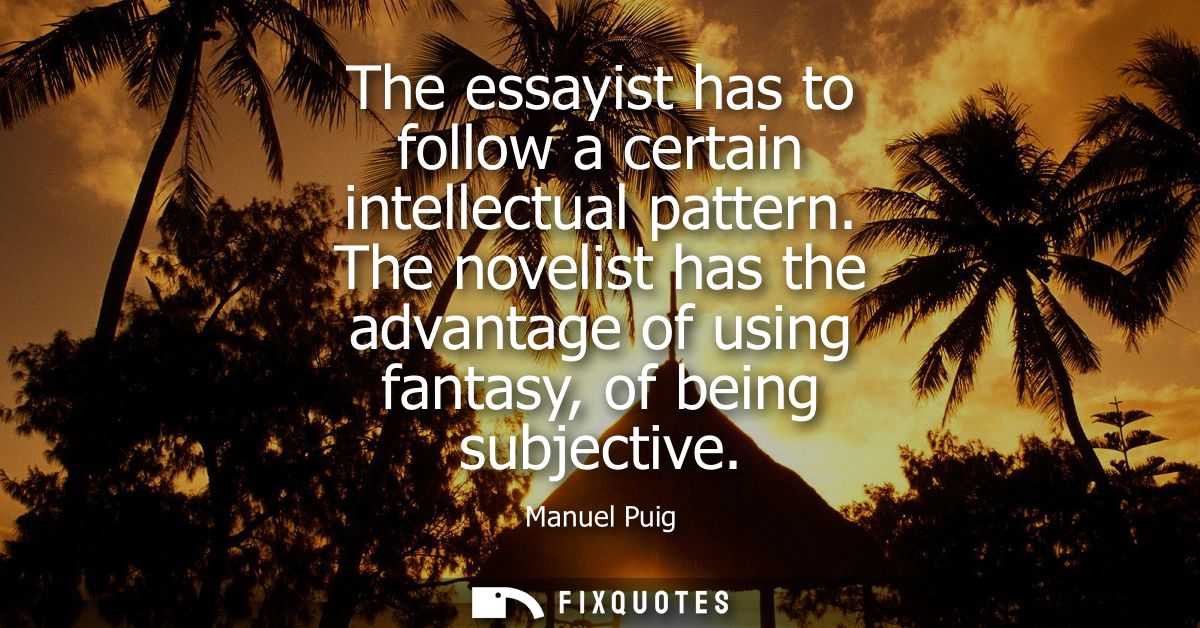"The essayist has to follow a certain intellectual pattern. The novelist has the advantage of using fantasy, of being subjective"
About this Quote
Manuel Puig sets up a tension between two modes of knowing. The essayist works within an architecture of argument: a hypothesis, supporting evidence, counterarguments addressed, conclusions drawn. This is not merely a stylistic convention; it is an ethical pact with the reader to privilege verification, coherence, and public reason. The essayist’s voice is tethered to a shared language of proof. Even when personal, the form leans toward demonstrable claims and reproducible logic. The mind advances by steps that can be retraced.
The novelist, by contrast, is licensed to cross borders closed to discursive prose. Fantasy is not escapism here but a tool that bends reality to reveal its hidden contours. Subjectivity becomes a laboratory for truth-testing: desires, memories, dreams, and contradictions take center stage. Where the essay proposes, fiction enacts; it makes hypotheses palpable by embodying them in characters and worlds. The “evidence” of a novel is the reader’s felt recognition, the shock of plausibility within the invented.
This freedom carries its own rigor. Subjectivity does not excuse sloppiness; it demands credible inner necessity. The novelist must persuade not by syllogism but by the integrity of voice, the inevitability of scene, the coherence of an invented cosmos. Yet the range of admissible evidence widens: metaphor, irony, allegory, and the unreliable narrator become methods for interrogating consensus reality. Fantasy can literalize social forces; subjectivity can fracture a single truth into many partial truths, exposing the politics of who gets to define the real.
Puig’s contrast illuminates complementary ambitions. The essay refines thought through disciplined clarity. The novel thickens thought into experience, letting contradictions coexist and ripen. One trusts argument to move minds; the other trusts imagination to rearrange perception. Together they map the terrain of understanding: the essay tracing its roads with compass and rule, the novel slipping through side streets, finding paths where none were charted.
More details
About the Author

